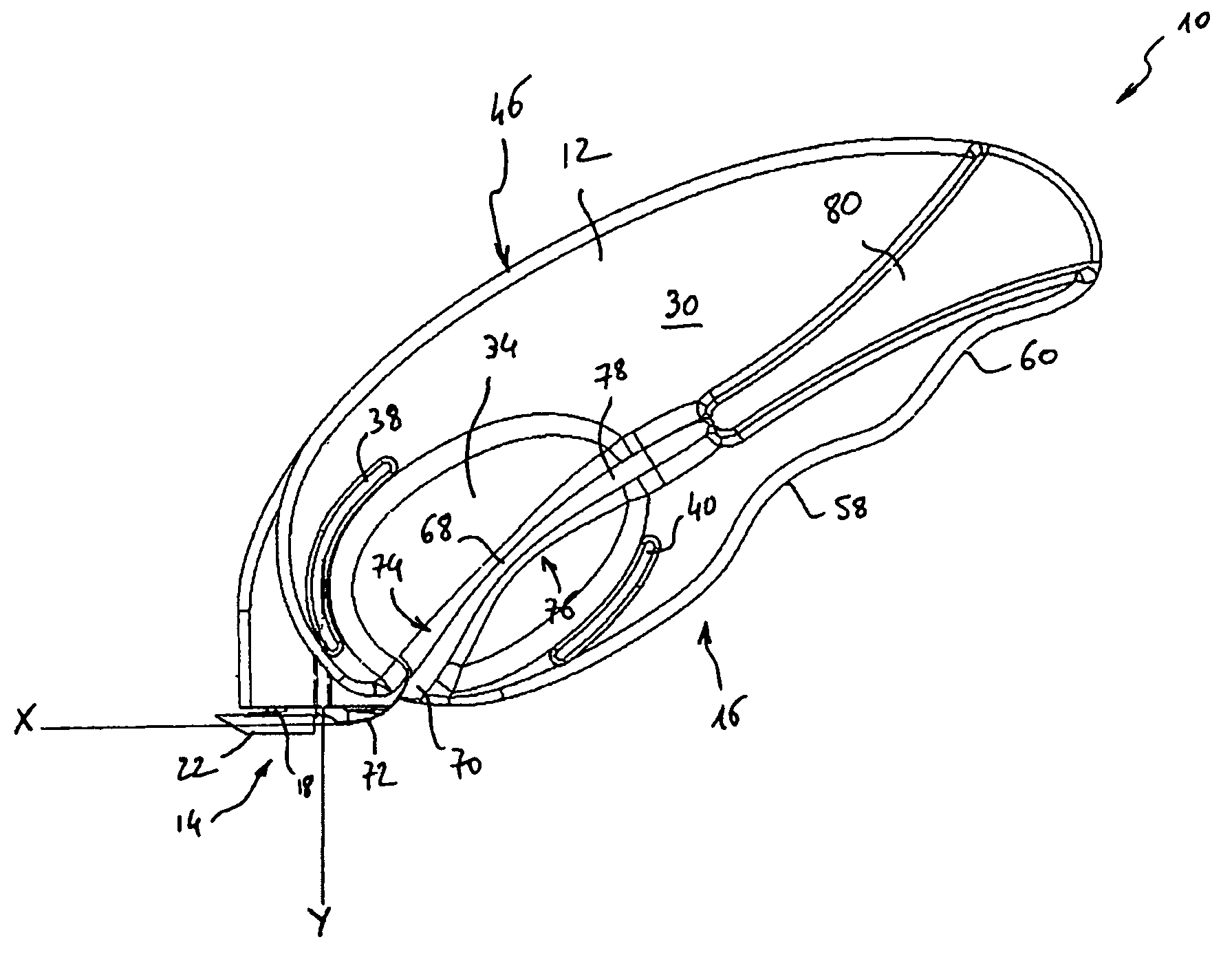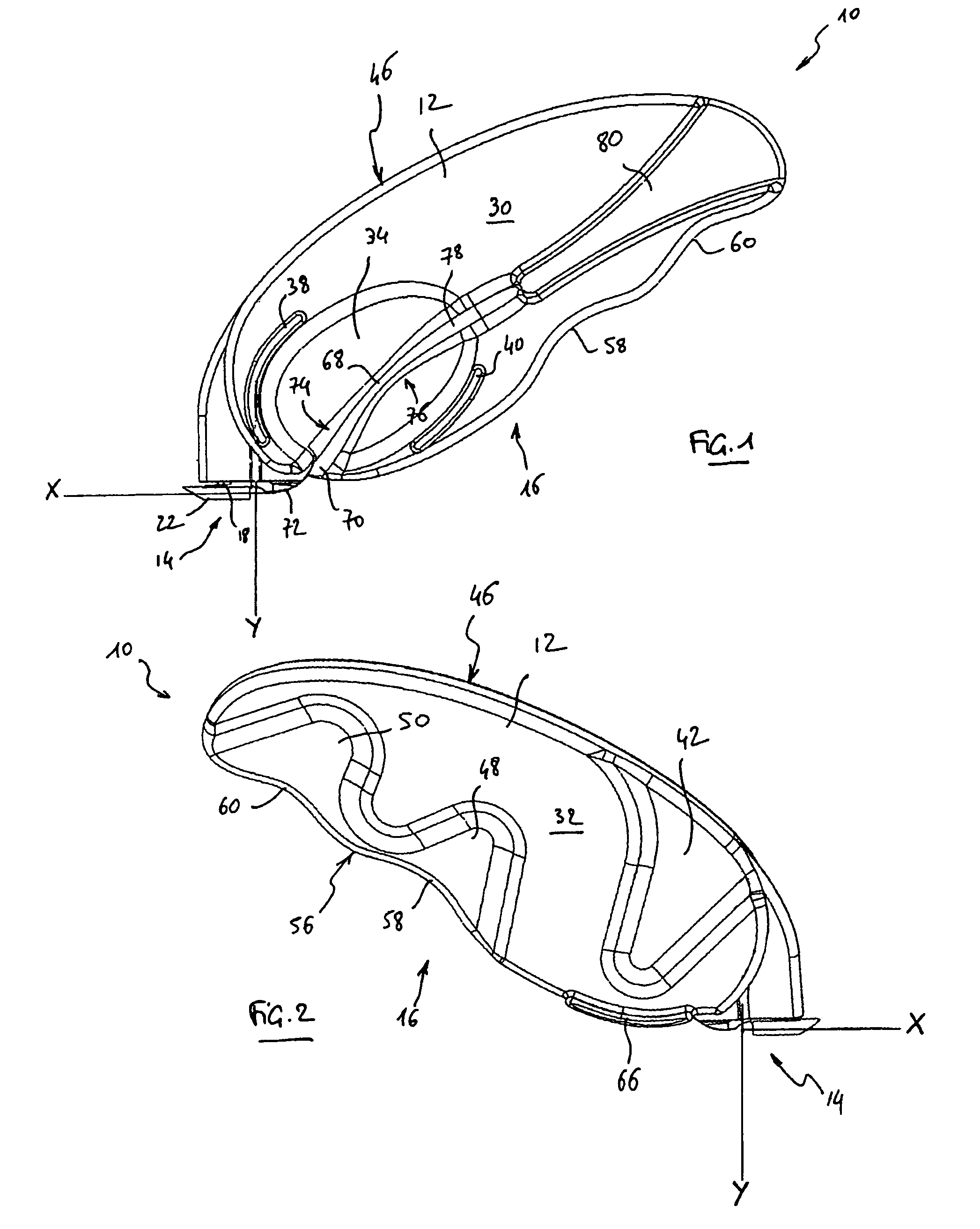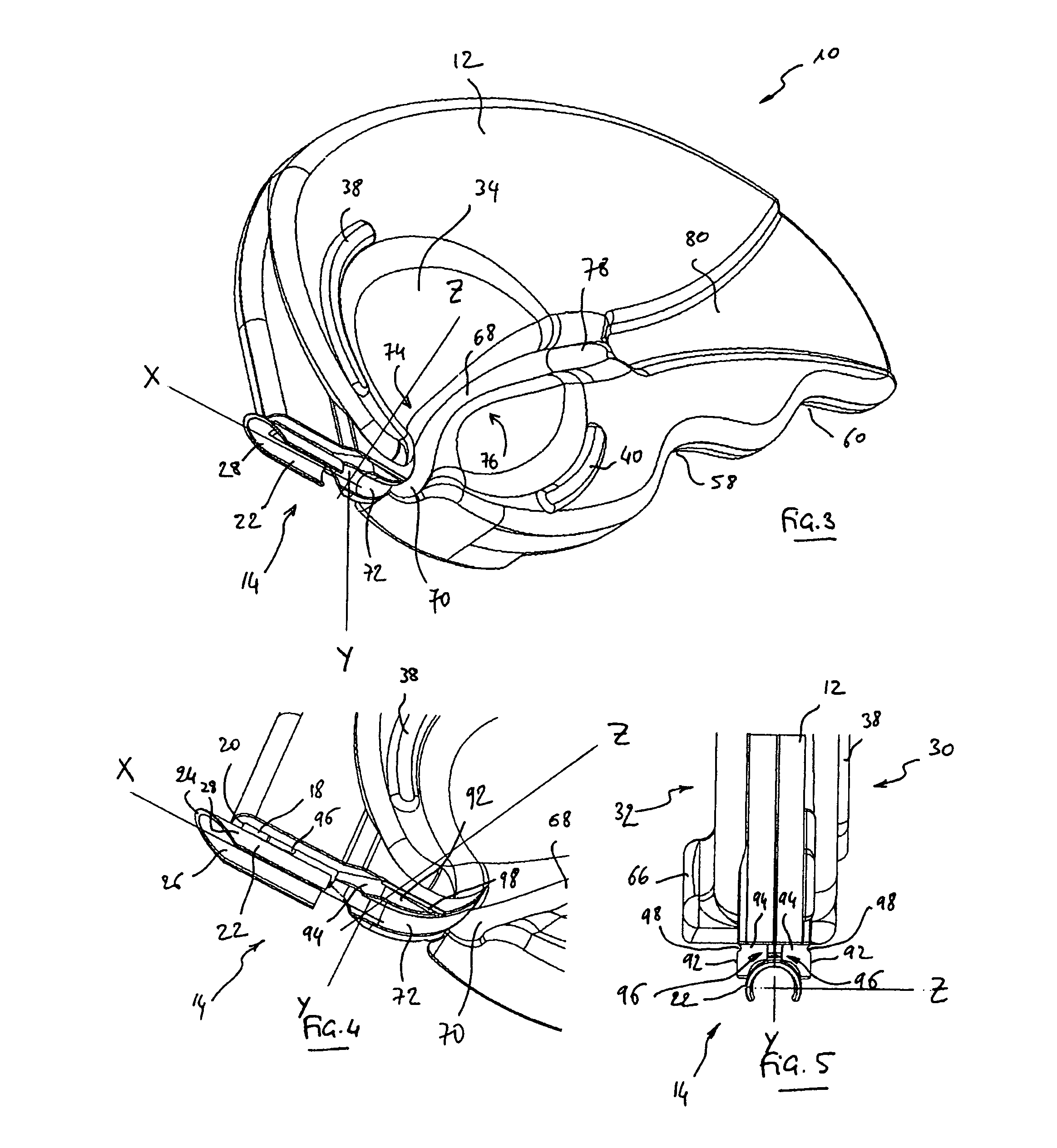Slitter tool for cutting a tubular sheath of a guide catheter
a catheter and tube tube technology, applied in the field of intracorporal lead implantation, can solve the problems of difficult extraction procedure, difficult intervention, and difficulty in latter type of lead
- Summary
- Abstract
- Description
- Claims
- Application Information
AI Technical Summary
Benefits of technology
Problems solved by technology
Method used
Image
Examples
Embodiment Construction
One will now describe an embodiment of the slitter tool according to a preferred embodiment of the present invention. With reference to the figures, reference 10 generally corresponds to the slitting tool or “slitter” tool of the present invention. Tool 10 comprises a blade holder body 12 with a roughly flattened shape, comprising a cutting area 14 and a prehension area 16.
Tool 10, for example, presents the following typical overall dimensions: length (the longer longitudinal dimension of the tool) of 65 to 100 mm, width (the longer transversal dimension) of 35 to 40 mm, and thickness of 5 to 6 mm. Of course, these dimensions are exemplary, and in no way limitative; and one of ordinary skill in the art will understand that the size of tool 10 must be such that the tool may be handled in the inside of a surgeon's hand, and not merely between the thumb and the forefinger, as it is the case with the various slitter tools that have been proposed by the prior art so far.
Cutting area 14 c...
PUM
| Property | Measurement | Unit |
|---|---|---|
| distance | aaaaa | aaaaa |
| distance | aaaaa | aaaaa |
| distance | aaaaa | aaaaa |
Abstract
Description
Claims
Application Information
 Login to View More
Login to View More - R&D
- Intellectual Property
- Life Sciences
- Materials
- Tech Scout
- Unparalleled Data Quality
- Higher Quality Content
- 60% Fewer Hallucinations
Browse by: Latest US Patents, China's latest patents, Technical Efficacy Thesaurus, Application Domain, Technology Topic, Popular Technical Reports.
© 2025 PatSnap. All rights reserved.Legal|Privacy policy|Modern Slavery Act Transparency Statement|Sitemap|About US| Contact US: help@patsnap.com



